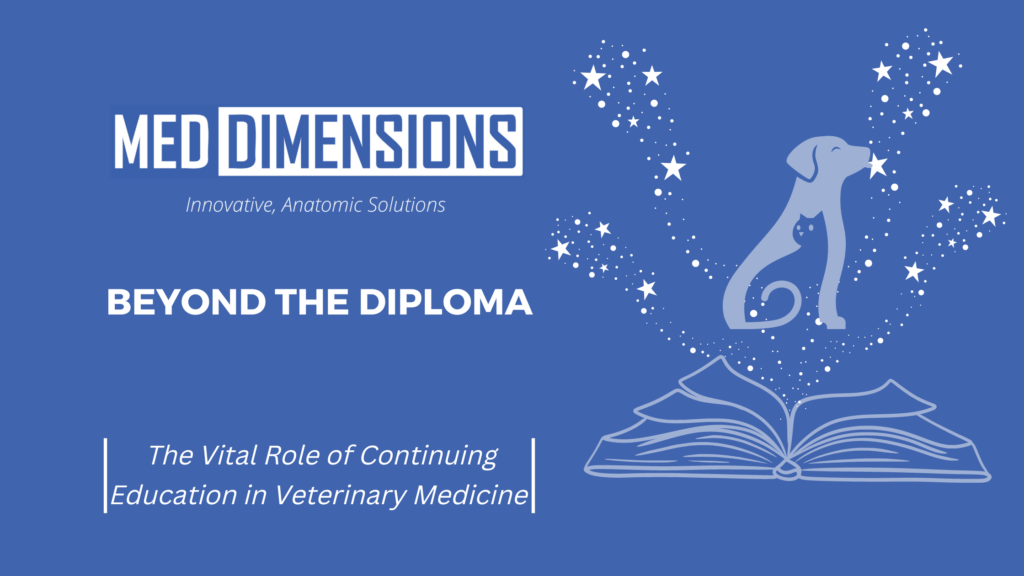Beyond the Diploma: The Vital Role of Continuing Education in Veterinary Medicine

Embarking on a career in veterinary medicine is a journey marked by passion, dedication, and a commitment to the well-being of animals. While veterinary school equips professionals with a solid foundation, the dynamic nature of the field calls for a commitment to lifelong learning.
The Ever-Evolving Landscape of Veterinary Medicine
Veterinary medicine is not a static discipline; it evolves with advancements in technology, research, and the understanding of animal health. To remain at the forefront of these changes, veterinarians must actively engage in continuing education beyond the confines of their initial academic training. This ongoing learning process is essential for staying abreast of emerging diseases, evolving treatment modalities, and the latest diagnostic tools.
The Benefits of Continuing Education:
- Skill Enhancement: Continuing education provides veterinarians with opportunities to enhance and update their clinical skills. Workshops, seminars, and online courses offer practical insights into new techniques, technologies, and treatment approaches.
- Specialization and Expertise: As veterinary medicine diversifies, professionals may choose to specialize in specific areas such as oncology, dermatology, or surgery. Continuing education facilitates the acquisition of specialized knowledge, enabling veterinarians to offer enhanced services to their patients.
- Adapting to Technological Advances: Advances in diagnostic tools and treatment options are rapid. Staying current with these technological advancements is crucial for providing optimal care. Continuing education ensures that veterinarians are proficient in using the latest technologies for accurate diagnostics and effective treatment.
- Ethical and Professional Development: Continuing education fosters ethical decision-making and professional growth. It instills a commitment to the highest standards of veterinary care, reinforcing the responsibility veterinarians hold toward their patients, clients, and the profession as a whole.
Collaboration: The Engine of Veterinary Progress
While individual commitment to continuing education is pivotal, the collective advancement of veterinary medicine relies heavily on collaboration. Collaborative efforts among veterinarians, researchers, educators, and industry professionals create a synergistic environment where ideas are exchanged, research findings are disseminated, and innovative solutions are born.
- Interdisciplinary Collaboration: Veterinary medicine intersects with various disciplines, including biology, technology, and public health. Collaborating across these domains fosters a holistic understanding of animal health, leading to more comprehensive and effective treatment strategies.
- Research and Knowledge Sharing: Collaboration accelerates the pace of research and knowledge dissemination. Sharing insights and discoveries through conferences, workshops, and collaborative projects propels the entire veterinary community forward, enriching the collective understanding of best practices.
- Mentorship and Networking: Continuing education often involves mentorship and networking opportunities. Establishing connections with seasoned professionals provides invaluable guidance, fostering a supportive community where knowledge and experience are shared.
Embracing a Culture of Lifelong Learning and Collaboration
In the dynamic landscape of veterinary medicine, the commitment to continuing education and collaboration is not just a professional responsibility; it’s a testament to a veterinarian’s dedication to excellence. By embracing a culture of lifelong learning and fostering collaborative efforts, veterinary professionals contribute not only to their individual growth but also to the advancement of the entire field. As we look to the future, let us recognize that the pursuit of knowledge and collaborative endeavors are the driving forces propelling veterinary medicine to new heights.